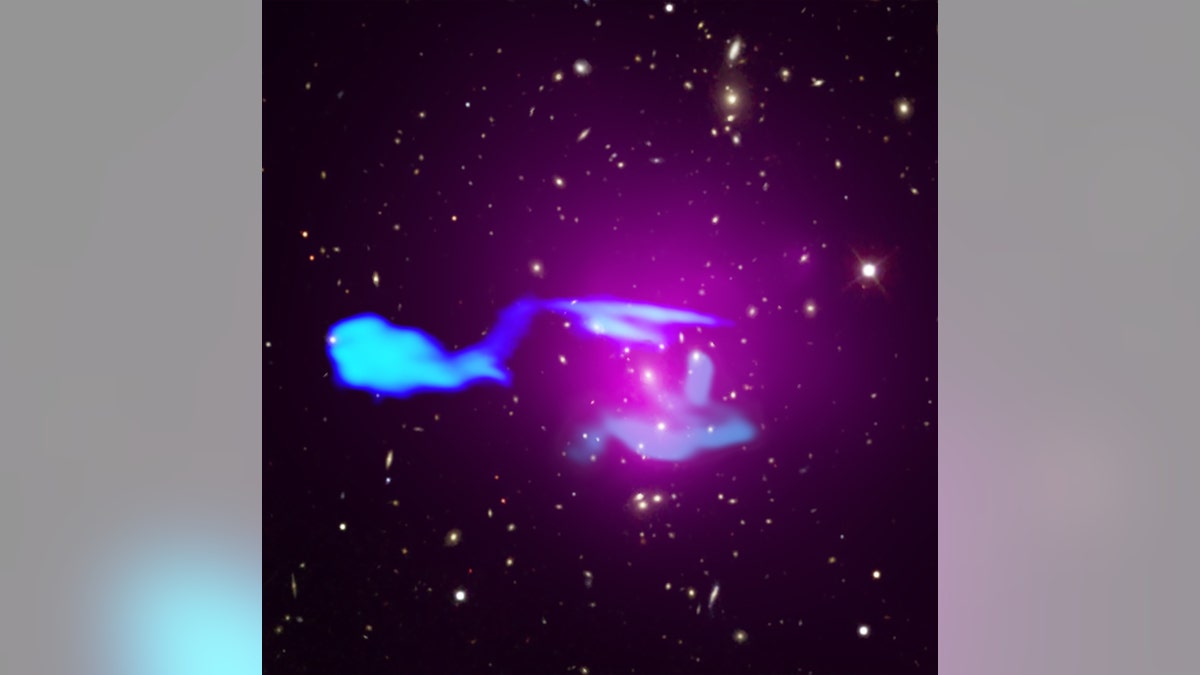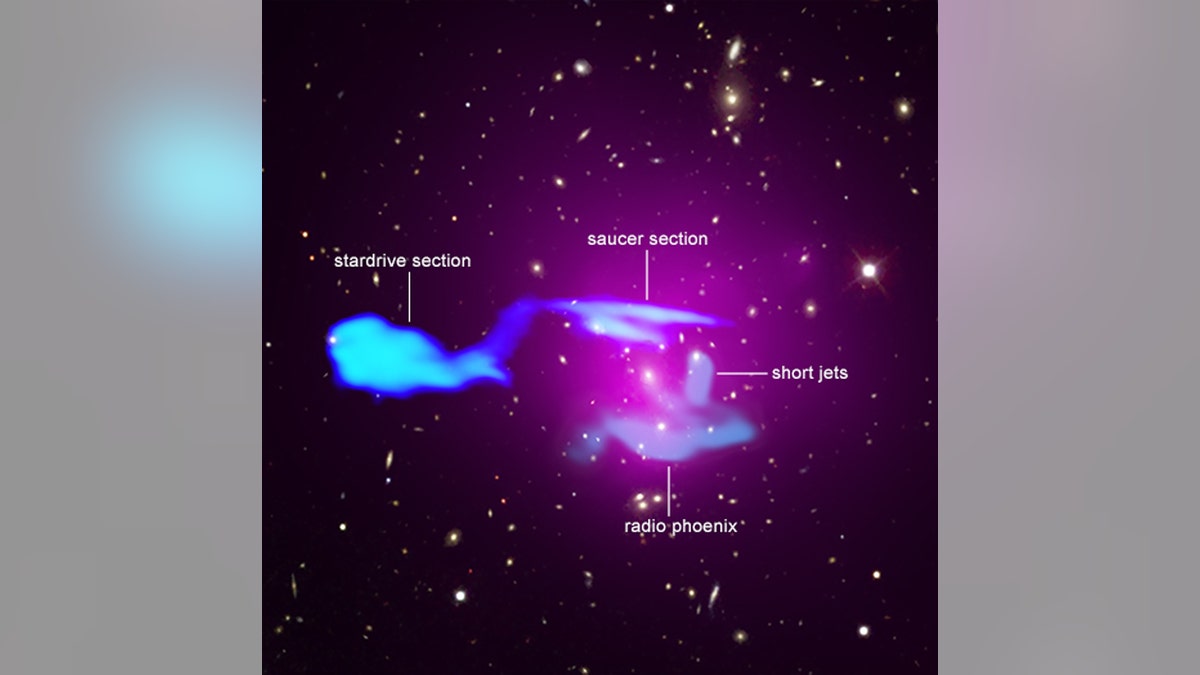
(X-ray: NASA/CXC/Leiden Univ./F. de Gasperin et al; Optical: SDSS; Radio: LOFAR/ASTRON, NCRA/TIFR/GMRT)
Space may be the final frontier, according to Captain Kirk, but it's also the place where astronomers have located the USS Enterprise — metaphorically speaking.
NASA has unveiled images of a galaxy cluster known as Abell 1033 that, according to the space agency, has an "uncanny resemblance to many of the depictions of the fictional Starship Enterprise from Star Trek."
The galaxy cluster is 1.6 billion light-years away from Earth and these structures "are the largest objects in the Universe held together by gravity," NASA noted.
NASA POSTS PHOTO OF 'CRASHED FLYING SAUCER FROM OUTER SPACE'
With the help of X-ray and radio data, astronomers found that Abell 1033 is actually two galaxy clusters in the process of colliding. "This extraordinarily energetic event, happening from the top to the bottom in the image, has produced turbulence and shock waves, similar to sonic booms produced by a plane moving faster than the speed of sound," NASA wrote on its website.
The researchers proposed that "the interplay between radio-emitting plasma and the perturbed intra-cluster medium can gently re-energize relativistic particles initially injected by active galactic nuclei," according to the study's abstract. The study was published in the journal Science Advances.
The image also shows off "pareidolia" according to NASA, "a psychological phenomenon where familiar shapes and patterns are seen in otherwise random data."

(X-ray: NASA/CXC/Leiden Univ./F. de Gasperin et al; Optical: SDSS; Radio: LOFAR/ASTRON (NCRA/TIFR/GMRT))
The Chandra X-ray Observatory has also posted a video of Abell 1033. In the video description, the Observatory writes: "Studies of Abell 1033 and other merging galaxy clusters help scientists better understand the physics that occurs when these cosmic giants collide."
Inside Abell 1033, the galactic collision is interacting with another energetic cosmic process, NASA noted — the production of jets of high-speed particles by matter spiraling into a supermassive black hole. The jets are seen on the left and right sides of the image, the space agency added.
MYSTERIOUS INTERSTELLAR OBJECT CONUNDRUM INTENSIFIES AS NASA REVEALS IT DIDN'T ORIGINALLY SEE IT
The energy found in the electrons of the saucer and neck part of the emissions is actually higher than that found in the section labeled stardrive, near the lower left.
"This suggests that the electrons have been re-energized, presumably when the jets interact with turbulence or shock waves in the hot gas," NASA wrote, adding: "The energetic electrons producing the radio emission will normally lose substantial amounts of energy over tens to hundreds of millions of years as they radiate."
